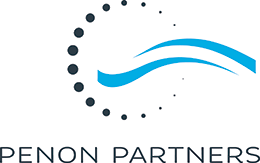Context
The Global Infrastructure and Operations, GIO, team of one of the world’s leading hotel companies was delivering projects with legacy methodologies. Their waterfall processes were rooted in physical infrastructure that required arduous approval of capital funding, long delivery timelines from hardware manufacturers and finally physical installation in a datacenter. This resulted in development teams making many architectural and technology decisions without involving the slow GIO organization resulting in them feeling like order takers rather than partners in the delivery of capabilities.
The goal was to move to an Agile delivery process that also leveraged the on-demand capabilities of Cloud and “X”-as-a-service that are available to today’s Infrastructure organizations.
Accomplishment
We trained the GIO engineering teams on Agile methodologies and coached them on how this would both increase their skill set and allow them to advance beyond being order takers to becoming consultative partners with the business teams.
We created a matrix organization that was both the traditional technology silos and also cross-functional scrum teams that each had all the skills needed to deliver a comprehensive solution. Rather than organizing by line of business or application, we organized by the type of work being delivered.
- Teams focused on work that they had done before and would require a full two-week sprint
- Teams focused on work that they had done before and could be completed in a few hours. Their goal was to complete the delivery and automate it for self-service in the future
- Teams focused on unknown work that had never been done before where delivery would be iterative and require proof-of-concepts, minimum viable products and incremental delivery
We established weekly office hours where both the application developers and GIO engineers teams worked together to ideate new needs and get feedback on the previous sprint’s delivery in-order to continually improve.
The GIO engineering team migrated from their delivery tool to the same tool used by the application developers so that all delivery work was visible in a common tool.
Finally, we moved all GIO engineering work demand into this common tool and away from email, word or mouth, texts, etc. so that they had a clear view of the full demand pipeline and of what every individual was working on.
Outcome
Within a year, the organizations had become consultative partners, hundreds of deliveries had been automated for self-service delivery and for the first time ever the GIO engineering team had a clear view of the demand for their services and the capacity of their teams. This capacity/demand intelligence allowed GIO to have meaningful discussions and decisions about priority, scope, schedule and capacity.
Written by Andy Smith, asmith@penonpartners.com Practice Leader – IT Operations Excellence at Penon Partners
Thank you for your active reading – Discover our services and why Penon!

